-
Posts
2,646 -
Joined
-
Last visited
-
Days Won
139
Posts posted by Peter Suh
-
-
8 hours ago, Captainfingerbang said:
Just doing my due diligence here out of curiousity. I Can see an Arc loader here. https://github.com/AuxXxilium/arc/releases/tag/24.2.10
and i see a LIST of patches here: https://github.com/AuxXxilium/arc-patches
But i dont see an "Arc Loader with Arc Patch" any where. could you please point me to the patch portion or is it included? I'm a lil lost
I asked you a favor, but didn't you see it?
-
1 hour ago, Captainfingerbang said:
Yes, i dont know if you realize, but i have ZERO IGPU. 5900x has no IGPU it would have to do with software. Which i know software can do this transcode because i have an Intel machine with no IGPU, XEON, and it software transcodes the files for video thumbnails only. Or maybe it USED TO until i updated yesterday? Oh no, i hop its not bad news.
Ok well, though defeated, while i am here asking for help, does anyone have any ideas in their heads on how i can get the serial # format of DS2422+?
As a result of the test, it was confirmed that the video thumbnail in the photo requires an AME with a SA6400 license.
With these results, it can be said that there is no difference between SA6400 and DS2422+ for this purpose only.And one tip: if you have at least one genuine Sn/Mac, QC will be maintained even if you change the model.
I don't know if I'm lucky, but I haven't been banned yet.
-
28 minutes ago, Captainfingerbang said:
Yes, i dont know if you realize, but i have ZERO IGPU. 5900x has no IGPU it would have to do with software. Which i know software can do this transcode because i have an Intel machine with no IGPU, XEON, and it software transcodes the files for video thumbnails only. Or maybe it USED TO until i updated yesterday? Oh no, i hop its not bad news.
Ok well, though defeated, while i am here asking for help, does anyone have any ideas in their heads on how i can get the serial # format of DS2422+?
I'm sorry. Even though I knew that the 5900X was a model without an iGPU, I overlooked it.
If you decide to migrate to a model other than DS918+, I recommend trying SA6400 instead of DS2422+.
If you have an Intel iGPU in the original SA6400, H/W transcoding is easily handled.
There is no need to install AME, nor does it require a genuine Serial or Mac. Codec patches are also unnecessary.
However, I am also curious about how the SA6400 operates without an iGPU.
If H/W transcoding is not possible, at least S/W transcoding should work.
I also have Works that can be run with only a Xeon CPU without an iGPU.
I will tell you the results of testing how the SA6400 works. -
9 minutes ago, Captainfingerbang said:
Thanks a bunch Peter.
I got everything setup on the AMD system you have me the confidence!
Everything is PERFECT!
With one exception. Im getting AME Codec errors now.
1 of 2 MAIN things i use Synology for, the #1 most important is my families Photo management, AND my boss at work absolutely MUST HAVE this working for work, now using Synology Photos.
This new test machine is not using my REAL serial and mac and cannot right now but later possibly.
So i Pray to the Linux gods (Peter, etc) they can help me with the issue with Advanced Media Extensions in attached images.
I simply need this machine to create thumbnails for videos, but it is not because of no serial mac. Causing repeated errors as im sure you are all familiar.
So for testing i need to use tools like these to make Synology think its real serial/mac since now the AME is attached to serial mac.
Bottom line i tried one or both of these tools, but may have done it wrong, still errors or tools wrong NOT TCRP Friend.
I'm using latest TCRP Friend by Peter Suh on AMD platform (1st time for AMD) 5900x b550 DSM 7.2.1-69057 Update 4 with DS2422+
https://github.com/wirgen/synocodectool-patch?tab=readme-ov-file
https://github.com/darknebular/Wrapper_VideoStation
Which of these tools is best solution to solve this? Or maybe is there a newer or better method please share, i just need to solve this while i test other parts.
Thank you for your past comments peter and folks, and please help soon!
You don't seem to have looked at my answer carefully.
Transcoding from bare metal to AMD iGPU is not possible.
This includes transcoding all media.
It's not just that video transcoding like plex is impossible.
Photo transcoding that works with i915.ko is also included here.
AMD clearly has some things to give up.
Think again.In the server forum in Korea where I work, for AMD transcoding,
I recommend proxmox + lxc solutions.
lxc says that AMD iGPU can also be used for transcoding.
I also have no actual installation experience.
Some users are only providing information about the possibility as shown below.
If translation is possible, please refer to the search results below.https://svrforum.com/index.php?mid=nas&act=IS&search_target=title_content&is_keyword=AMD+lxc
-
12 hours ago, dj_nsk said:
test only ==> Arc Loader with Arc Patch
I understand that Arc loader provides various crack tools for violating the license that can irritate Synology.
This is a sensitive matter.
@dj_nsk, @Captainfingerbang I hope you two will no longer mention ARC's license violations in this topic.
I do not agree with ARC's violations.
Please inquire in the ARC section. -
6 hours ago, Captainfingerbang said:
Thank you Peter.
Ok, So regardless of Whether i have amd or intel it does not matter which Diskstation i choose. I guess i didnt understand why all the chipsets are always listed everywhere like apollolake, breverton etc. I thought Amd only can use amd and intel can only use intel diskstation loader type.
Question #1
I would like to swap my current Hardware:
- Xeon/X99/DS918+ 10 SSD's in SHR1
TO:
- AMD 5900x + AMD B550 with DS918+ (including using nvme as storage and including up to 12 sata drives, and including x540-t2 10gbe nic, AND using ALL 24 threads)
Do you see a reason why this specific move would not work with AMD + DS918+? (Compatibility reasons) I already noticed my current intel DS918+ setup only does Software transcode, so i'm not worried to lose HW trancode, as i dont have it.
Question #2 I have bad memory, but i thought in past, i just directly installed latest .img of your TCRP "Friend", but dont see img for that. So is installing via your M-SHELL tool going to get me the latest TCRP "Friend" when installing from M-SHELL? i like the Friend one best.
Question #3 I know you work sometimes with 007revad. I will be needing to use his Synology_HDD_db script to run at every boot. Will this be a problem after migrating?
Question #4 I do not use VMM. But it is a MUST that i use Synology Container Manager for a much needed container i use everyday. Is the container manager also reliant upon needing to use v1000, r1000, or epyc7002 platforms??
Thank you.
Question #1
-> If it doesn't work on DS918+, it seems that the NIC is not responding in the first place.
Question #2
-> Even if you do not necessarily use the latest version .img, the latest Friend kernel is always automatically updated to the latest version.
Question #3
-> I have not been able to check the Synology_HDD_db script that was recently changed by 007revad. We encourage you to continue using it as you do now.
Question #4
-> Container manager was called Docker in the past. Docker is supported on all platforms. If there are Docker issues that arise from migration between models, I don't know exactly.
thank you-
 1
1
-
5 hours ago, Captainfingerbang said:
Hey Peter, sorry to hijack, i know you hate PM's. but i love your work, use most of your stuff on github. Up till now ive been using intel for all things xpenology and tcrp friend mshell etc.
I would like to know if there is a webpage that not only shows how many cores/threads each build model is compatible with, but also if it is compatible with AMD.
I would like to now try tcrp friend on AMD like 5900x.
Is AMD Ryzen compatible? If so is it just as stable as Intel? And would there be a build that would allow me to use all 24 cores on B550????
There is no model or platform you have to give up just because you use AMD Ryzen.
You can think of Redpill as being developed cross-platform.
However, with Ryzen, you only need to remember a few limitations.
1. Since it is not an Intel iGPU, transcoding is not possible.
2. If you need to use VMM, select one of the models that use the v1000, r1000, or epyc7002 platforms.
-
4 minutes ago, cferra said:
I thought you'd stop here, but I guess I'll have to explain again.
MacOS's DCDT/SSDT related to Device-Tree is limited to ACPI. This is beside the point because it is related to power management.
The part we should focus on in Synology Device-Tree is the media device tree, such as disks.
-
2 hours ago, cferra said:
https://dortania.github.io/Getting-Started-With-ACPI/Manual/dump.html
https://www.insanelymac.com/forum/topic/278170-dsdt-—-what-is-it-and-how-do-i-get-it/
https://elitemacx86.com/threads/how-to-install-dsdt-ssdt-clover-opencore.31/
https://dortania.github.io/OpenCore-Install-Guide/
let me know what you think, I’m a bit out of my depth in the development side of things.
(MacOS DSDT / SSDT)
The Differentiated System Description Table (DSDT) and the Secondary System Description Table (SSDT) are part of the Advanced Configuration and Power Interface (ACPI) standard. These tables are provided by the ACPI BIOS, which describes and controls the computer's hardware. It contains information needed by the ACPI operating system to manage system resources and hardware.
Differentiated System Description Table (DSDT): DSDT is part of the ACPI standard and primarily provides platform-specific information. It is mainly updated with BIOS updates provided by the motherboard manufacturer.
SSDT (Secondary System Description Table): SSDT is used as a complement to DSDT. It is also an ACPI table, which usually provides additional information regarding system resources. Many SSDTs are created at system boot and are used once the OS boots.
These tables support various functions such as energy management, power management, device configuration, etc. in hardware. Often in macOS you need to modify or customize these tables. Typically, modifications may be made to Hackintosh builds or to address specific hardware compatibility issues.
DSDT and SSDT files are loaded onto the system through the EFI partition or kernel extensions in macOS. Modifying these files requires the use of ACPI-specific tools and scripts. These modifications must be done carefully; incorrect modifications may result in system instability or booting problems.(The Linux Device Tree)
The Linux Device Tree is a standardized way to describe hardware in the Linux kernel. It is especially used in embedded systems, supporting different hardware configurations and providing information about the platform. Device Tree functions similarly to the existing BIOS and ACPI tables, but describes information about devices in a tree structure rather than a static structure.
A Device Tree is a text file that describes hardware and device information for a specific platform. These text files usually have a .dts or .dtsi file extension. Converted to a .dtb (Device Tree Blob) file compiled using Device Tree Compiler (dtc). This .dtb file is loaded when the Linux kernel boots and defines the configuration of the hardware.
The main advantages of Device Tree are:
1.Hardware abstraction: Device Tree describes specific configurations of hardware, allowing the same Linux kernel to be used on multiple hardware platforms.2.Dynamic loading: Device Tree can be dynamically loaded by the kernel at runtime. This is useful when adding or removing devices from the system.
3.Separation of source code: Device Tree is provided as an independent file that describes the hardware configuration, so it is separated from the Linux kernel source code.
4.Readability: Device Tree is provided in text format, making it easy for humans to read and understand.
The structure of the Device Tree is as follows:
- Root Node: The highest node of the Device Tree and serves as the parent of lower nodes.
- Device Node: A node that contains information about the device, and child nodes describe the device's properties.
- Property: A key-value pair belonging to a node that represents the characteristics of the device.
Device Tree is primarily used on embedded Linux systems, but can also be used on some desktop systems. It is especially widely used in systems based on ARM architecture.As far as I know, these two concepts seem unrelated. is not it?
-
38 minutes ago, cferra said:
Can we leverage what they do in the hackintosh community to work around device tree issues?
What is it about? Please tell me the specific link so I can take a look.
-
45 minutes ago, cferra said:
Makes sense - 3622 I was unable to build the array though for some reason - instant error when attempting. Using 14 10tb SAS disks.
SA6400 this worked with no issue.
is SA3600 better for a large build out? Or even something being with testing?
rr seems to have been stabilized for SA3600, but mshell has not yet.
I am not sure about the advantages of SA3600. -
4 hours ago, cferra said:
@Peter Suh on SA6400 Is it a known issue that connecting new drives while being turned on when LSI hba cards is not working?
im able to see drives when I reboot the machine but not if I add drives when the machine is on.
LSI 9305 series cards.
You seem to be talking about Hot PlugIn for SATA disks or SAS disks.
Device-Tree based models such as SA6400 do not seem to support Hot PlugIn disk mapping.
Newly added disks will only have new mappings processed through the reboot process.
In a genuine Synology, this process is probably unnecessary.
-
-
On 1/2/2024 at 8:36 PM, Orphée said:
When I mean serial console I mean serial COM port console access.
With Telnet access from Windows Putty on a baremetal system, or accessible with Serial Com over TCP with ESXi, or accessible from Proxmox adding a Serial port (Serial0) socket.
Here is RR grub.cfg :
# cat grub.cfg insmod search insmod echo insmod terminal insmod test insmod font insmod loadenv insmod serial insmod usb_keyboard insmod linux insmod gzio insmod fat insmod ext2 set default="boot" set timeout="5" set timeout_style="menu" set vesa_mode=1 if [ -s $prefix/grubenv ]; then load_env fi if [ "${next_entry}" ]; then set default="${next_entry}" unset next_entry save_env next_entry fi if [ "${vesa_mode}" ]; then set vesa_mode=${vesa_mode} fi function load_video { if [ x$feature_all_video_module = xy ]; then insmod all_video else insmod efi_gop insmod efi_uga insmod ieee1275_fb insmod vbe insmod vga insmod video_bochs insmod video_cirrus fi } load_video if loadfont unicode; then set gfxmode=auto insmod gfxterm terminal_output gfxterm fi set menu_color_normal=light-green/blue set menu_color_highlight=black/green if serial --unit=0 --speed=115200; then terminal_input --append serial_com0 terminal_output --append serial_com0 fi function set_gfxpayload { if [ ${vesa_mode} -eq 1 ]; then set gfxpayload=keep else set gfxpayload=text fi } set TERM=tty2 set RR_CMDLINE="" search --set=root --label "RR3" if [ -s /zImage-dsm -a -s /initrd-dsm ]; then if [ "${default}" = "direct" ]; then set timeout="1" menuentry 'Boot DSM kernel directly' --id direct { set_gfxpayload echo "cmdline:" echo "${dsm_cmdline}" echo "Loading DSM kernel..." linux /zImage-dsm ${dsm_cmdline} echo "Loading DSM initramfs..." initrd /initrd-dsm echo "Booting..." echo "Access http://find.synology.com/ to connect the DSM via web." } fi menuentry 'Boot DSM' --id boot { set_gfxpayload echo "Loading kernel..." linux /bzImage-rr console=${TERM} net.ifnames=0 ${RR_CMDLINE} echo "Loading initramfs..." initrd /initrd-rr echo "Booting..." } menuentry 'Force re-install DSM' --id junior { set_gfxpayload echo "Loading kernel..." linux /bzImage-rr console=${TERM} net.ifnames=0 ${RR_CMDLINE} force_junior echo "Loading initramfs..." initrd /initrd-rr echo "Booting..." } fi menuentry 'Configure loader' --id config { set_gfxpayload echo "Loading kernel..." linux /bzImage-rr console=${TERM} net.ifnames=0 ${RR_CMDLINE} IWANTTOCHANGETHECONFIG echo "Loading initramfs..." initrd /initrd-rr echo "Booting..." } if [ ${vesa_mode} = 1 ]; then menuentry 'Change vesa to text video mode' --id videomode { set vesa_mode=0 save_env vesa_mode configfile ${prefix}/grub.cfg } else menuentry 'Change text to vesa video mode' --id videomode { set vesa_mode=1 save_env vesa_mode reboot configfile ${prefix}/grub.cfg } fiI have successfully adjusted Tinycore Linux to use menu.sh after logging in as the tc user through the serial COM port you requested.
Four windows appear on the monitor console as usual and can be accessed separately through the COM port.
You need to log in as tc / P@ssw0rd.
After the function is distributed, the automatic update of curepure64.gz must be processed once for the function to start working.-
 2
2
-
-
8 minutes ago, shibby said:
checked on my friend`s Xpenology yesterday and it didn`t work. sanrepair.sh reported than directory already exist but i coundn`t start Virtual Machine...
I migrated his Xpenology under Proxmox and moved Virtual Machine from Synology VMM to Proxmox so for me is "problem solved"
The vm should start automatically in the state processed by sanrepair.sh without any adjustments.
It would have been nice to have tracked the contents of /var/log/synoscgi.log more in error situations.
If you have already migrated to proxmox, it will be difficult to check anymore.
-
23 hours ago, Peter Suh said:
The vmm-repair addon is now deprecated.
With just one sanmanager-repair addon, both SAN MANAGER and VMM can be restored, enabling more stable operation and control than service.
It was established in the form of a bootup scheduler.
https://github.com/PeterSuh-Q3/tcrp-addons/blob/main/sanmanager-repair/src/install.sh
Automatic startup of individual VMs within VMM is now possible.
https://github.com/PeterSuh-Q3/tcrp-addons/blob/main/sanmanager-repair/src/sanrepair.sh -
On 1/31/2024 at 10:33 PM, shibby said:
Sorry but this looks like "wound dressing" but not like a fix or solution. If i good understant, when NAS will be rebooted or has power failure then after boot VM will not start automatically. Then your addon will detect it in log and recreate folder`s path and permissions but until i will not manually start VM it will be off. This is not a solution.
I still dont understand when this bug (problem with loading modules for SAN Manager) was appear. Is this was after added offline installer for M-Shell? I made some test and when i manually edit menu.sh file and force to update tag:v1.0.0.0 and then rebuild the loader then all works as intended (SAN Manager works, VMM is starting and i can run Virtual Machine without any issue.
I really think you should come back to v1.0.0.0 as "prod" repository and working on "offline instalation" in "dev" repository.
As you pointed out, there were still remaining issues.
Among the command line options applied from Friend kernel 0.1.0d, skip_vender_mac_interfaces appears to be directly causing SAN MANAGER damage.
rr is prepared to use this option, but mshell does not seem to be able to do so.
I updated Friend kernel 0.1.0j to remove this option and have now confirmed the stability of SAN MANAGER once again.-
 2
2
-
-
20 hours ago, shibby said:
now i understand a lot more.
You said "clean install" but what do you think, is switch to other model of Synology may fix it? For example: my friend is now on DS920+. What if he will rebuild loader for DS923+? Will it be treated as a clean install (if he select instalation without losing his data)?
The vmm-repair addon is now deprecated.
With just one sanmanager-repair addon, both SAN MANAGER and VMM can be restored, enabling more stable operation and control than service.
It was established in the form of a bootup scheduler.
https://github.com/PeterSuh-Q3/tcrp-addons/blob/main/sanmanager-repair/src/install.sh
Automatic startup of individual VMs within VMM is now possible.
https://github.com/PeterSuh-Q3/tcrp-addons/blob/main/sanmanager-repair/src/sanrepair.sh-
 1
1
-
-
17 hours ago, shibby said:
now i understand a lot more.
You said "clean install" but what do you think, is switch to other model of Synology may fix it? For example: my friend is now on DS920+. What if he will rebuild loader for DS923+? Will it be treated as a clean install (if he select instalation without losing his data)?
There was a little more progress today.
There was no need to complicatedly figure out the uuid.
Just because the iscsi and loopback folders do not exist under /config/target.
VMM failed to create a directory under it.
The failure of iscsi and loopback to be automatically created is probably related to SAN MANAGER damage. -
11 hours ago, shibby said:
now i understand a lot more.
You said "clean install" but what do you think, is switch to other model of Synology may fix it? For example: my friend is now on DS920+. What if he will rebuild loader for DS923+? Will it be treated as a clean install (if he select instalation without losing his data)?
However, there is one caveat.
VMM must match the specifications of the real CPU platform and the DSM CPU platform.
Intel and AMD cannot work together.
Although VMM can operate on DS920+ (Gemini Lake) based on Intel CPU,
DS923+(r1000) does not work because it is an AMD-based DSM. -
11 hours ago, shibby said:
now i understand a lot more.
You said "clean install" but what do you think, is switch to other model of Synology may fix it? For example: my friend is now on DS920+. What if he will rebuild loader for DS923+? Will it be treated as a clean install (if he select instalation without losing his data)?
This won't help if your migration involves switching to a different model.
SAN MANAGER appears to work fine on the first boot after completing migration, but it is lost again on reboot.
If you want to reinstall from DS920+ to DS923+, you can use it after rebuilding the loader.
DSM of DS923+ is reinstalled only in the system partition area, so it does not invade the data partition.
All settings are initialized, so you can prepare a backup of settings (dss files) and packages and use them for restoration after reinstallation.
For detailed instructions on this, please refer to Synology KB. -
21 minutes ago, shibby said:
Sorry but this looks like "wound dressing" but not like a fix or solution. If i good understant, when NAS will be rebooted or has power failure then after boot VM will not start automatically. Then your addon will detect it in log and recreate folder`s path and permissions but until i will not manually start VM it will be off. This is not a solution.
I still dont understand when this bug (problem with loading modules for SAN Manager) was appear. Is this was after added offline installer for M-Shell? I made some test and when i manually edit menu.sh file and force to update tag:v1.0.0.0 and then rebuild the loader then all works as intended (SAN Manager works, VMM is starting and i can run Virtual Machine without any issue.
I really think you should come back to v1.0.0.0 as "prod" repository and working on "offline instalation" in "dev" repository.
What you seem to mean is that the latest version of mshell cannot be trusted unconditionally.
I don't know if you are aware of this problem, but I changed redpill-load/bundled-exts.json to force use of the mac-spoof addon.
It will be dated from December 28, 2023 to January 2, 2024.
https://github.com/PeterSuh-Q3/redpill-load/commit/87ecb48fba5bdeb602b9e03c7dc1e7acba6da491
https://github.com/PeterSuh-Q3/redpill-load/commit/0ed22a488cc2b9d7ec198ea4e3531875056ec35c
At that time, users who built the load for 5 days suffered damage to their SAN MANAGER and VMM due to the forced mac spoof.
After that, mac-spoof was never forced to be used.
After performing a clean installation with the latest version of mshell, I tested VMM on DS3622xs+. It worked without problem.
And friend's prod and dev don't include the version switch functionality you want.
The only purpose is to switch between the development and use versions of the redpill.ko kernel.
I'm sorry, but I would like to tell you that the only fundamental solution so far is a clean installation.
I am sorry for causing you this pain due to my mistake of applying mac spoof without sufficient understanding.
I will continue to do as much as possible to restore SAN MANAGER and VMM while avoiding clean installation, which is the last resort.
For now, there is nothing I can do for you other than "wound dressing"
As you said, it seems difficult to automatically start VMM within this "wound dressing". -
[NOTICE]
The vmm-repair addon has also been distributed.
If you rebuild the loader, it will be added and run.
When running the VM for the first time, an error may occur once because the uuid has not yet been found, but it will start normally after that.https://github.com/PeterSuh-Q3/tcrp-addons/blob/main/vmm-repair/src/vmmrepair.sh
-
On 1/29/2024 at 5:59 PM, shibby said:
I`m using you M-Shell Tools from the beginning. At the moment i`m on 0.9.5.0 with latest DSM version installed and VMM works correct. So there is something wrong with M-Shell, not with DSM. Maybe we should step back, back to 100% working M-Shell and then do updates step-by-step and try to find a moment when SAN/VMM has been broken.
Two days ago i made an update from 7.1.1 to 7.2.1 of my friend Xpenology. He`s using VMM for Virtual Machine of Home Assistant. After upgrade he cannot run Home Assistant VM. This is a huge problem for him because the entire smart home installation is based on Home Assistant! and i cannot help him.I really want to see in M-Shell project two changes:
- do not implement changes directly to "prod" repository. You should use "dev" and then pull changes to "prod". Users should be able to select with M-Shell repository they want to use- M-Shell versioning: do not update M-Shell automatically. If user want to use older version of M-Shell then they should be able to do this. Much more users need a working SAN/VMM instead of exsample "M-Shell offline instalation". If i am sure that specific version of M-Shell is working well then i should be able to use them. At the moment i cannot do this because M-Shell will be automatically updated.
I share a solution to recover the SAN MANAGER after it is damaged and the VMM connected to it is damaged.
It is necessary to create the system /config directory used in VMM and adjust the permissions of the files within it.
The key is to create the directory twice and grant permission twice.Ultimately, we will create a vmm-repair addon and distribute it further.
The directory to be restored or the directory requiring permission is as shown below.
Prepare tail with root privileges.tail -f /var/log/synoscgi.log | grep "No such file or directory"Spoiler
tail -f synoscgi.log | grep "No such file or directory"2024-01-30T21:54:31+09:00 NAS4 synoscgi_SYNO.Core.ISCSI.LUN_1_load_lun[8001]: iSCSI:iscsi_lio_target_load.cpp:113:SYNOiSCSILioTargetLoad mkdir(/config/target/iscsi/iqn.4931fa37-41ab-44bc-b472-5c8ea14a36b2, 448), err=No such file or directory
2024-01-30T21:54:32+09:00 NAS4 synoscgi_SYNO.Core.ISCSI.LUN_1_load_lun[7999]: iSCSI:iscsi_lio_target_load.cpp:113:SYNOiSCSILioTargetLoad mkdir(/config/target/iscsi/iqn.4931fa37-41ab-44bc-b472-5c8ea14a36b2, 448), err=No such file or directory
2024-01-30T21:57:24+09:00 NAS4 synoscgi_SYNO.Core.ISCSI.LUN_1_load_lun[22764]: iSCSI:iscsi_configfs_rw.cpp:21:SYNOiSCSIConfigfsWrite open(/config/target/iscsi/iqn.4931fa37-41ab-44bc-b472-5c8ea14a36b2/tpgt_1/attrib/demo_mode_write_protect, 1), err=No such file or directory
2024-01-30T21:57:25+09:00 NAS4 synoscgi_SYNO.Core.ISCSI.LUN_1_loop_mount[22756]: iSCSI:iscsi_lun_loopback_mount.cpp:118:SYNOiSCSILunLoopbackMount mkdir(/config/target/loopback/naa.4931fa37-41ab-44bc-b472-5c8ea14a36b2, 448), err=No such file or directory
2024-01-30T21:57:25+09:00 NAS4 synoscgi_SYNO.Core.ISCSI.LUN_1_loop_mount[22814]: iSCSI:iscsi_lun_loopback_mount.cpp:118:SYNOiSCSILunLoopbackMount mkdir(/config/target/loopback/naa.4931fa37-41ab-44bc-b472-5c8ea14a36b2, 448), err=No such file or directory
2024-01-30T21:57:52+09:00 NAS4 synoscgi_SYNO.Core.ISCSI.LUN_1_loop_mount[25051]: iSCSI:iscsi_lun_loopback_mount.cpp:118:SYNOiSCSILunLoopbackMount mkdir(/config/target/loopback/naa.4931fa37-41ab-44bc-b472-5c8ea14a36b2, 448), err=No such file or directory
2024-01-30T21:57:52+09:00 NAS4 synoscgi_SYNO.Core.ISCSI.LUN_1_loop_mount[25050]: iSCSI:iscsi_lun_loopback_mount.cpp:118:SYNOiSCSILunLoopbackMount mkdir(/config/target/loopback/naa.4931fa37-41ab-44bc-b472-5c8ea14a36b2, 448), err=No such file or directory
2024-01-30T21:58:26+09:00 NAS4 synoscgi_SYNO.Core.ISCSI.LUN_1_loop_mount[27910]: iSCSI:iscsi_configfs_rw.cpp:151:SYNOiSCSIConfigfsGetString open(/config/target/loopback/naa.4931fa37-41ab-44bc-b472-5c8ea14a36b2/tpgt_1/address, O_RDONLY), err=No such file or directoryAs shown in the tail log, the following processing is required.
This example follows my uuid, so it may differ depending on your environment.mkdir -p /config/target/iscsi/iqn.4931fa37-41ab-44bc-b472-5c8ea14a36b2 chmod 777 /config/target/iscsi/iqn.4931fa37-41ab-44bc-b472-5c8ea14a36b2/tpgt_1/attrib/demo_mode_write_protect mkdir -p /config/target/loopback/naa.4931fa37-41ab-44bc-b472-5c8ea14a36b2 chmod 777 /config/target/loopback/naa.4931fa37-41ab-44bc-b472-5c8ea14a36b2/tpgt_1/addressThe above processing may be required for each VMM VOLUME.
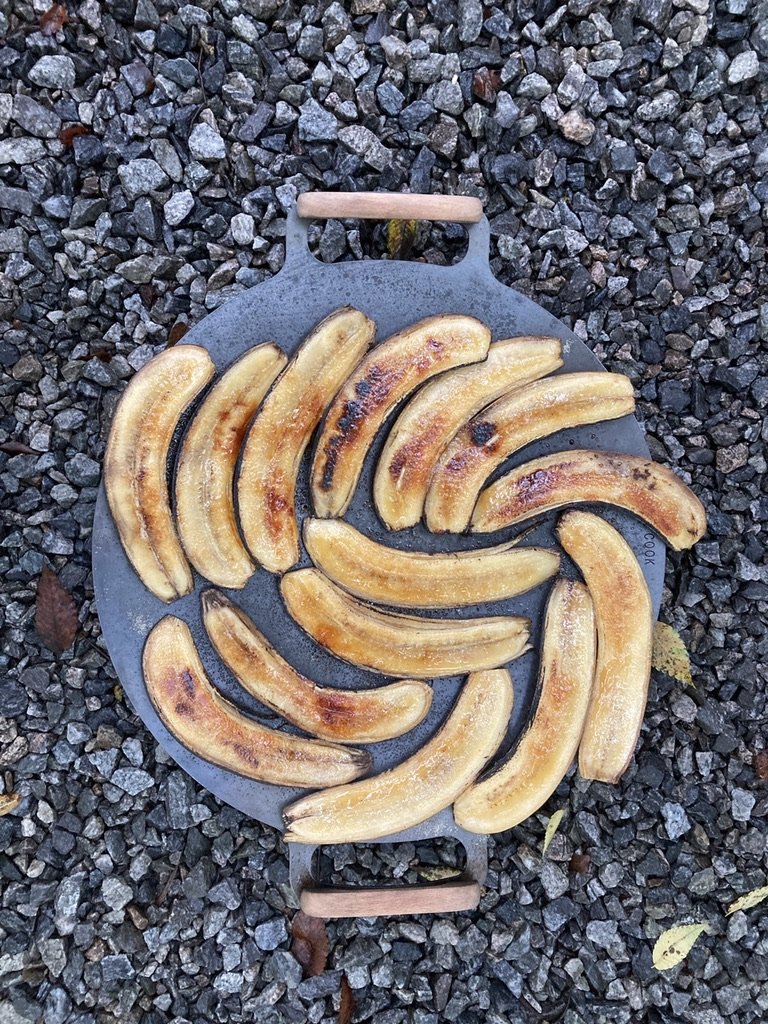

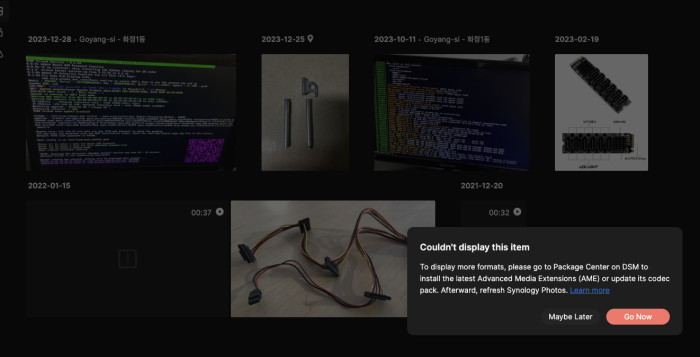
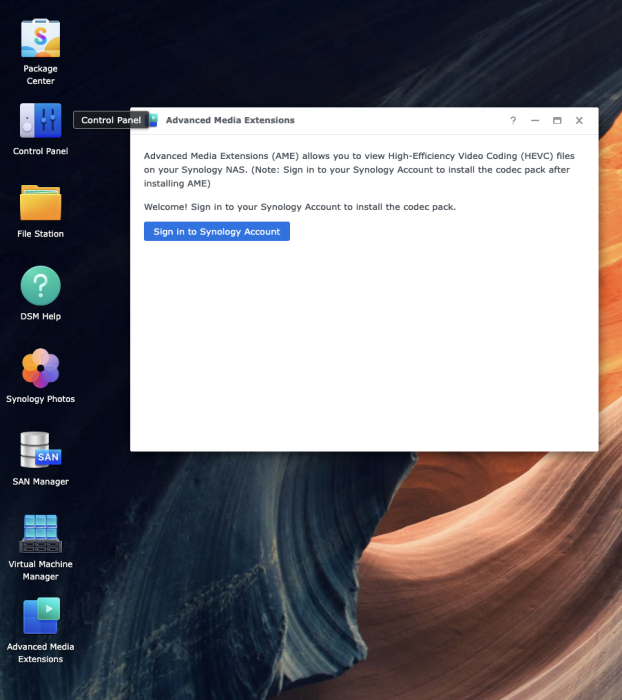
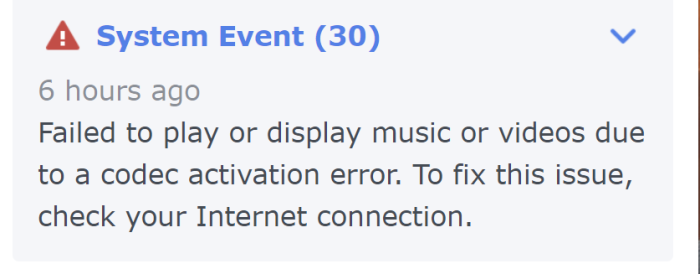
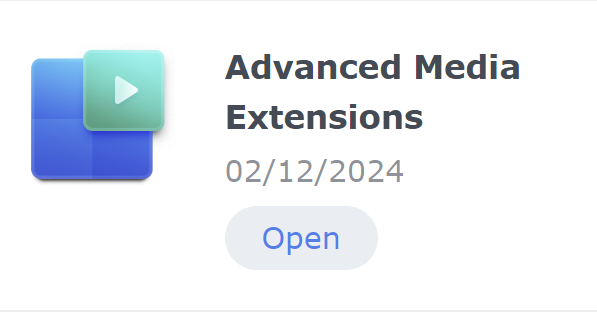
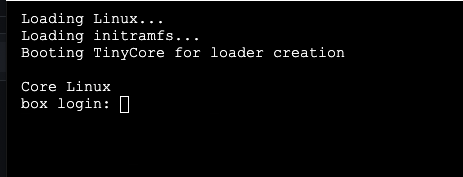
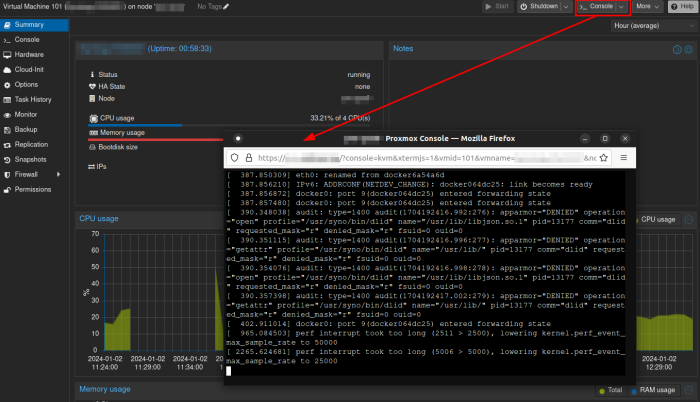
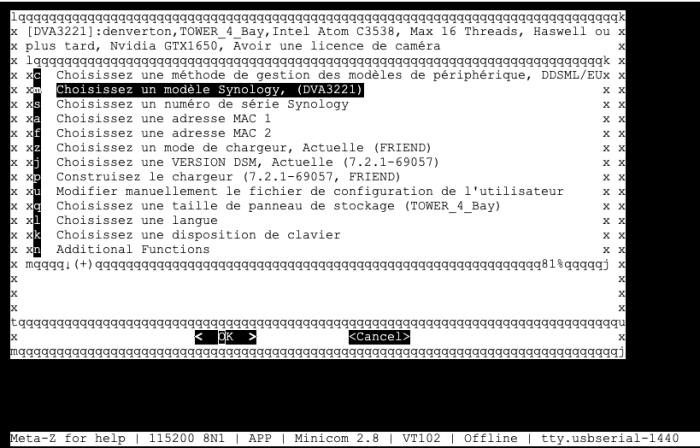
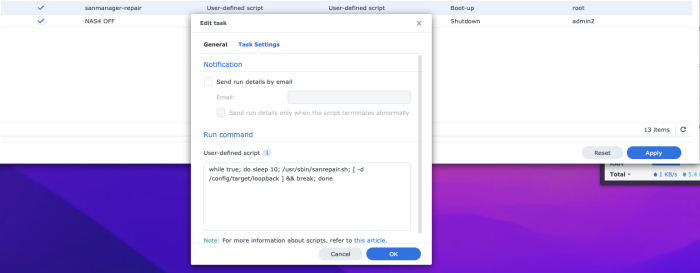
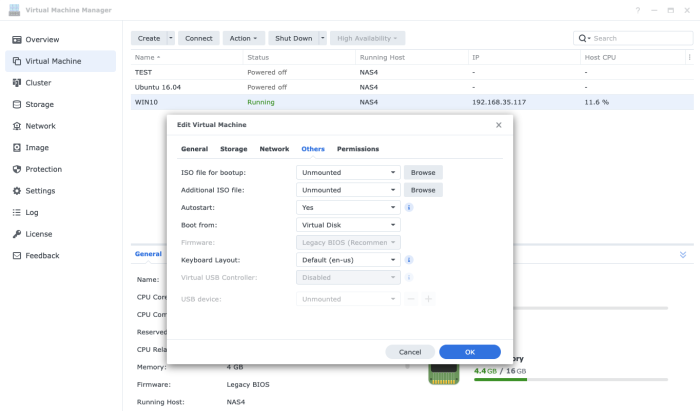
TinyCore RedPill Loader Build Support Tool ( M-Shell )
in Software Modding
Posted
I don't think this will work.
In my case, I had DS918+ SN and QC and migrated to DS920+.
It means that there was no ban in this process alone.